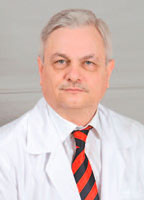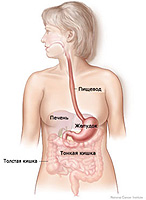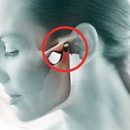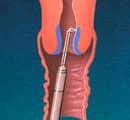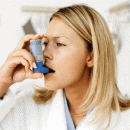Is your child?? Often even if he does not sneeze and does not cough, his well-being leaves much to be desired: he is pale, sluggish, capricious. The doctor puts the diagnosis: dysbacteriosis.
Content
What is dysbacteriosis: disease or symptom of the disease, the cause of the ailment
or its consequence. Pediatricians have not yet come to a common opinion about
that such dysbacteriosis. Anyway, parents are often asked
questions about the origin of this disease, can it be infected with it and how
treat dysbacteriosis. Let's try to answer them.
What is dysbacteriosis?
Dysbacteriosis
– this is a disruption of microbial equilibrium in the intestine when the number
bifido and lactobacilli becomes unacceptable small, and the number of harmful,
pathogenic, bacteria threateningly large.
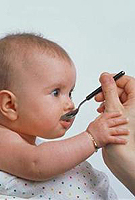
In the body, not sick
Dysbacteriosis, «Lives» More than 300 types of bacteria. Significant part of them
Make up microorganisms affecting the processes of digestion.
IN
human intestine necessarily present bifidobacteria -
Microorganisms creating powerful protection against harmful microbes,
entering the organism with air, food and water. Baby is born on
light with a sterile intestine, and the settlement of its bacteria occurs
already during childbirth. Further formation of healthy microflora
intestines of crumbs contributes to Mamino colostrum, and subsequently and milk.
Only breast milk (and in no case is not artificial
substitutes) can give the baby everything is necessary for normal operation
digestive organs. After all, simultaneously with useful microbes in the tiny body, the infants begin to penetrate
bacteria, with the resistance of which can only lacto and bifidobacteria.
If «Pest» won, then in the body of crumbs can begin
Inflammatory processes: long allergic reactions even on
Self «innocuous», From the point of view of allergies, products, dysfunction
intestines, liver, pancreas, endocrine system.
Subsequently, chronic diseases can develop - gastritis, ulcerative
Stomach disease, bronchial asthma and neurodermatitis. On formation
The biological environment of the gastrointestinal crumbs can affect
transferred by the mother during pregnancy of the disease, toxicosis, and
Also use of hormonal drugs and antibiotics.
Causes of dysbacteriosis
IN
some cases with age the child's body can cope
With disorders in the intestine flora. But it does not mean that
Dysbacteriosis will not appear again. A peculiar push for him
renewal can be any stress. Typical stressing
The situation is the occurrence of a child in a social team (children's
Garden, school).
The secondary dysbacteriosis is based on any
disease, and in this case dysbacteriosis is a symptom. His manifestation
Intestinal infections, ORZ and even teething.
except
that violation of the flora of the digestive tract can lead
unfavorable environmental situation and elevated radiation background.
Despite the fact that the dysbacteriosis is recognized by doctors and only a symptom or
as library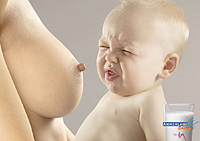 about another disease, it is necessary to treat it very seriously.
about another disease, it is necessary to treat it very seriously.
For treatment, drugs are used to destroy pathogenic colonies
bacteria (bacteriophages), and biological agents that can bring
The number of missing bifi- and lactobacilli to normal.
Lactobacterium
- peculiar «Controllers» intestine, watching
The number of conditionally pathogenic (harmful) microbes did not exceed
Permissible norms (1 - 4%). In addition, lactobacilli
Control the recovery processes of the mucous membrane
digestive tract.
In addition to bifido- and lactobacilli,
The digestive tract contains non-pathogenic intestinal sticks that are responsible for the production of vitamin to.
For a children's body
These microbes are vital. They serve as a barrier for pathogenic and
Patogenic bacteria and do not give them to penetrate the body.
At the same time, they impede:
- development of intestinal infections;
- activity of gas-forming bacteria;
- intoxication of the body, facilitating the work of the liver;
- The appearance of allergies.
As dysbacteriosis proceeds?
Specialists
distinguish four degrees of this disease. Identify one or another
The degree of the disease can be through microbiological analysis
The contents of the colon.
With the help of the analysis, doctors find out which microorganisms in the intestine the child is missing, and what too much.
How
more deviation from the norm of the number of microorganisms, the higher the degree
Diseases. If you detect the first degree dysbiosis
a sick child is not observed by any clinical phenomena, then
Dysbacteriosis of the second degree stool becomes liquid, with an admixture of greenery,
Possible constipation and nausea.

With a bacterial imbalance of the third
The degree of the baby observes a liquid chair, often green, decrease
Appetite, deterioration of well-being. The child becomes sluggish, capricious.
Fourth
The degree of dysbiosis is the most severe. The kid has a deficit
body masses, pallor of skin cover, decreased appetite, liquid and
frequent stool with admixture of mucus, greenery and sometimes blood with sharp sour or
putrebile smell.
At
cash with your crumbs at least one of these symptoms as you can
Faster consult a doctor - gastroenterologist.
Always remember,
that children with a weak immune system are prone to the appearance of dysbiosis,
Born by women who had hidden during pregnancy
intrauterine infection and toxicosis; abusing antibiotics, and
Also, children artificially fed from the first days of life and undergoing
Intrauterine hypoxia.
Intestinal sticks contribute
proper assimilation of food, improving immunity and even struggle with
atherosclerosis, adjusting the suction of cholesterol.
Besides,
For the intestinal population useful microorganisms created special
Bioqueuries and biogunts: bifox, bifi-life, bififrute, as well as drug
Primadophilus for Children, containing specially selected species
Bacteria that have been treated using cold drying technology:
Acidophilic lactobacillia and bifido-bacteria babies strain.
This
The drug is produced in powder form specifically for children in
age from birth to 5 years and is intended for microflora correction
children's intestines both in dysbacteriosis and in cases of simple intestinal
Dyspepsia and diathesis in food allergies.



